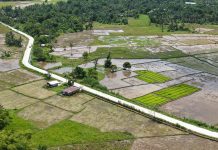TACLOBAN CITY- The population of this city has increased by 8 percent making it still the most populated area in the entire region. Based on the 2015 census conducted by the Philippine Statistics Authority (PSA), Tacloban has a total population of 242,089 or an increase of 8.6 percent compare to the 2010 survey. In 2010, Tacloban was only populated by 221,174 people. The population survey was conducted two years after Tacloban was pummeled by supertyphoon “Yolanda” which reduced its population by more than 2,200 people who perished due to the typhoon considered the world’s strongest to hit inland. Interestingly, the barangay that was considered as the worst-hit by Yolanda, Barangay 88 in San Jose district, remain to be one of the city’s most populated based on the survey.
The village, which has a population of 5,880 people, is Tacloban’s number six most populated barangay. However, its population was reduced by 3,926 compare to the 9,806 in 2010. “This is not actually surprising considering that Tacloban City is the regional center. The immigration that was noted after Yolanda hit the city was among its reasons,” Cielito Esquibel, city population officer, said. She added that the population of the city during day time could even reach to a million as people coming from across the region are coming in for some purpose like studies, work and business. Esquibel, however, said that they do not have a figure on the number of people coming from other parts of the region who resettled in Tacloban after the November 8, 2013 massive disaster that hit the city.
“But they settled here in Tacloban on the hope that they could availed many opportunities after Yolanda like housing and even employment,” the population officer said.
After Yolanda hit the city, nongovernment agencies, both local and international, as well as government agencies from around the world have provided assistance to the survivors like housing and jobs albeit on temporary basis. But Esquibel admitted that while the increase of Tacloban’s population could be seen on a positive sign, they are still alarm. For one, she said, this could result to problem on illegal settlers and degradation on the quality of life. “We have also to consider the kind of people coming in which could impact its peace and order situation,” Esquibel said. Her office is planning to put up its migration information center that could help them monitor the people coming in to the city. (JOEY A. GABIETA)



